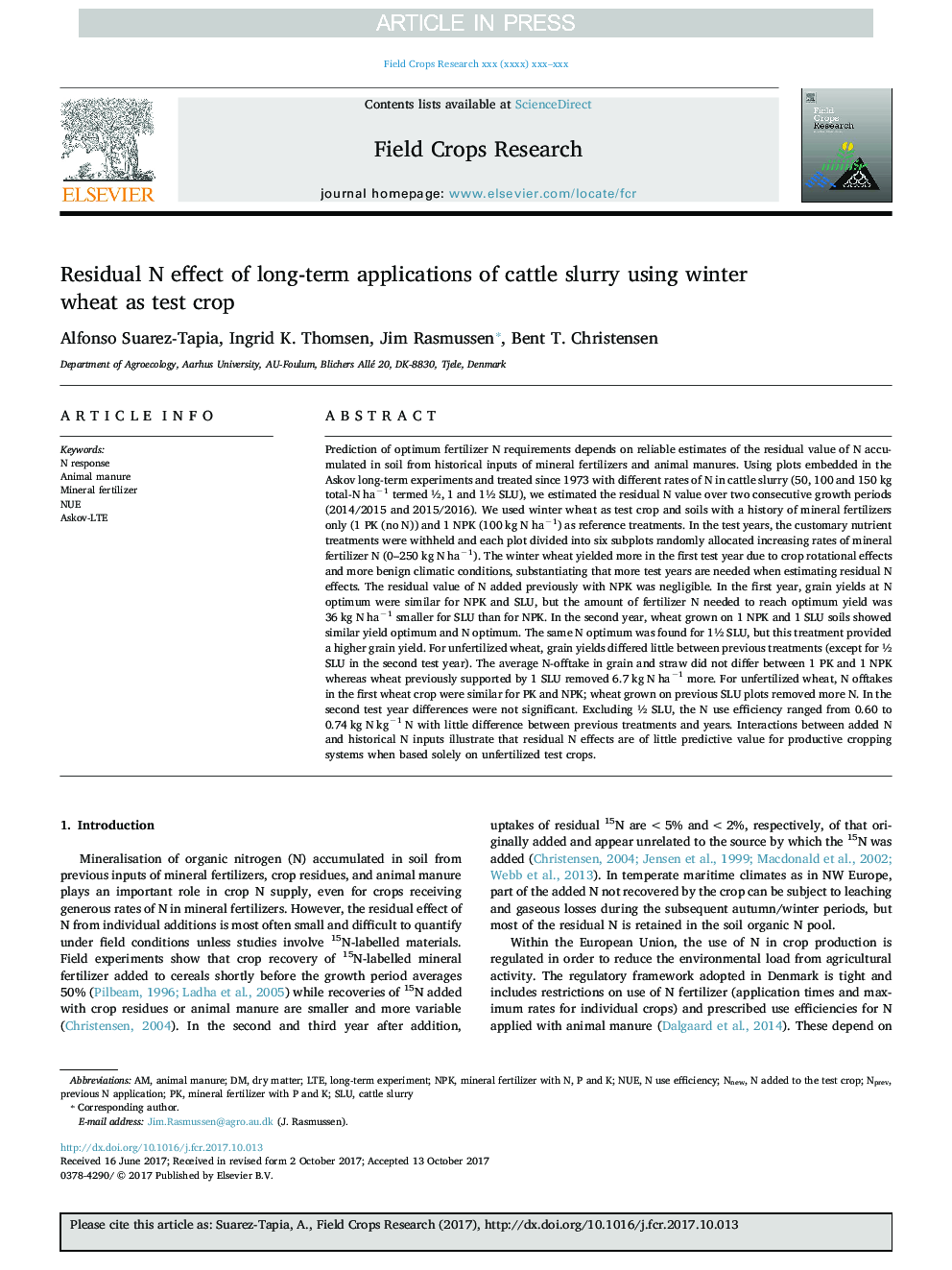| Article ID | Journal | Published Year | Pages | File Type |
|---|---|---|---|---|
| 8879266 | Field Crops Research | 2018 | 8 Pages |
Abstract
Prediction of optimum fertilizer N requirements depends on reliable estimates of the residual value of N accumulated in soil from historical inputs of mineral fertilizers and animal manures. Using plots embedded in the Askov long-term experiments and treated since 1973 with different rates of N in cattle slurry (50, 100 and 150 kg total-N haâ1 termed ½, 1 and 1½ SLU), we estimated the residual N value over two consecutive growth periods (2014/2015 and 2015/2016). We used winter wheat as test crop and soils with a history of mineral fertilizers only (1 PK (no N)) and 1 NPK (100 kg N haâ1) as reference treatments. In the test years, the customary nutrient treatments were withheld and each plot divided into six subplots randomly allocated increasing rates of mineral fertilizer N (0-250 kg N haâ1). The winter wheat yielded more in the first test year due to crop rotational effects and more benign climatic conditions, substantiating that more test years are needed when estimating residual N effects. The residual value of N added previously with NPK was negligible. In the first year, grain yields at N optimum were similar for NPK and SLU, but the amount of fertilizer N needed to reach optimum yield was 36 kg N haâ1 smaller for SLU than for NPK. In the second year, wheat grown on 1 NPK and 1 SLU soils showed similar yield optimum and N optimum. The same N optimum was found for 1½ SLU, but this treatment provided a higher grain yield. For unfertilized wheat, grain yields differed little between previous treatments (except for ½ SLU in the second test year). The average N-offtake in grain and straw did not differ between 1 PK and 1 NPK whereas wheat previously supported by 1 SLU removed 6.7 kg N haâ1 more. For unfertilized wheat, N offtakes in the first wheat crop were similar for PK and NPK; wheat grown on previous SLU plots removed more N. In the second test year differences were not significant. Excluding ½ SLU, the N use efficiency ranged from 0.60 to 0.74 kg N kgâ1 N with little difference between previous treatments and years. Interactions between added N and historical N inputs illustrate that residual N effects are of little predictive value for productive cropping systems when based solely on unfertilized test crops.
Keywords
Related Topics
Life Sciences
Agricultural and Biological Sciences
Agronomy and Crop Science
Authors
Alfonso Suarez-Tapia, Ingrid K. Thomsen, Jim Rasmussen, Bent T. Christensen,
